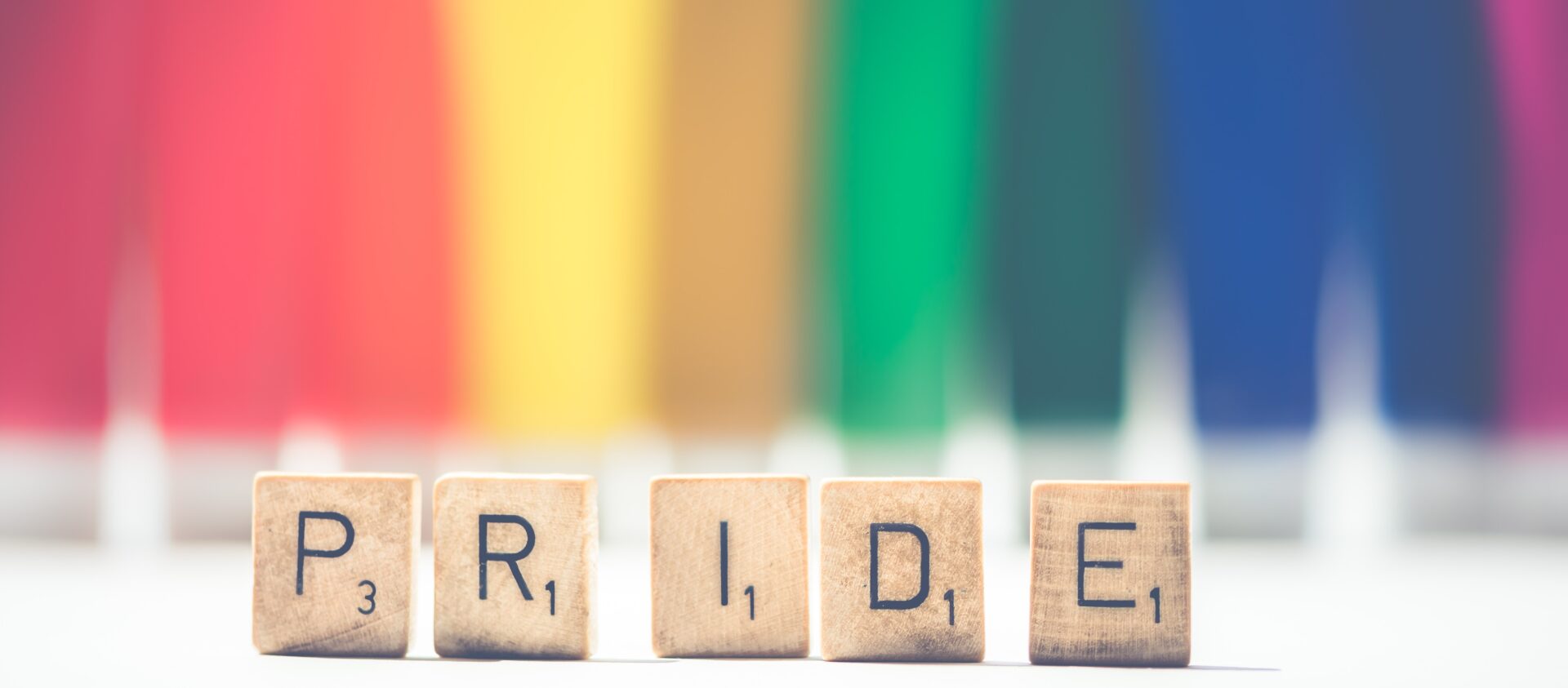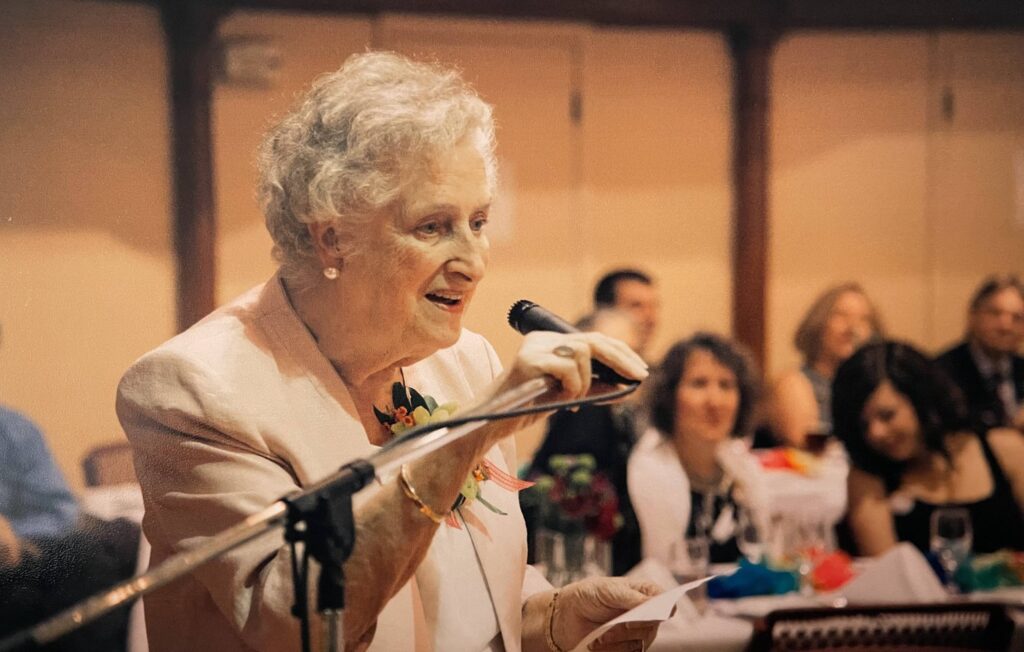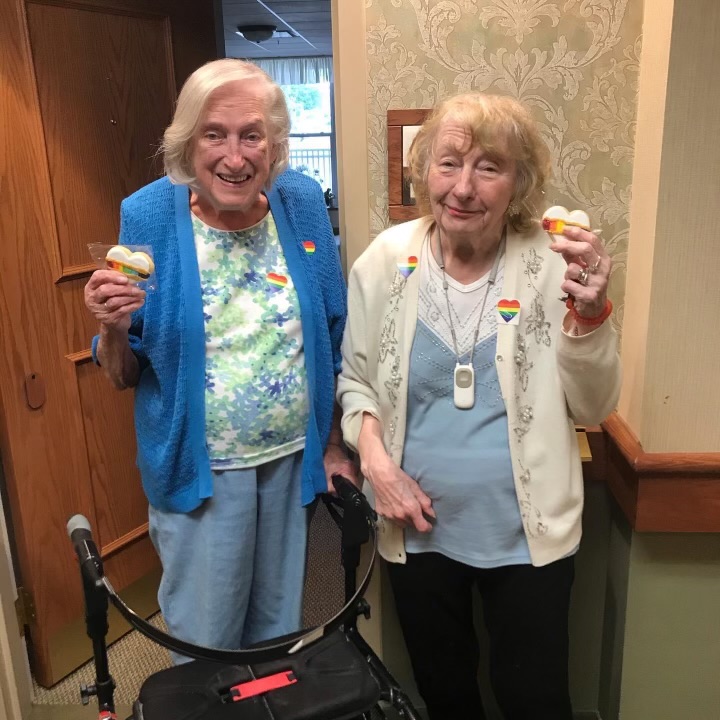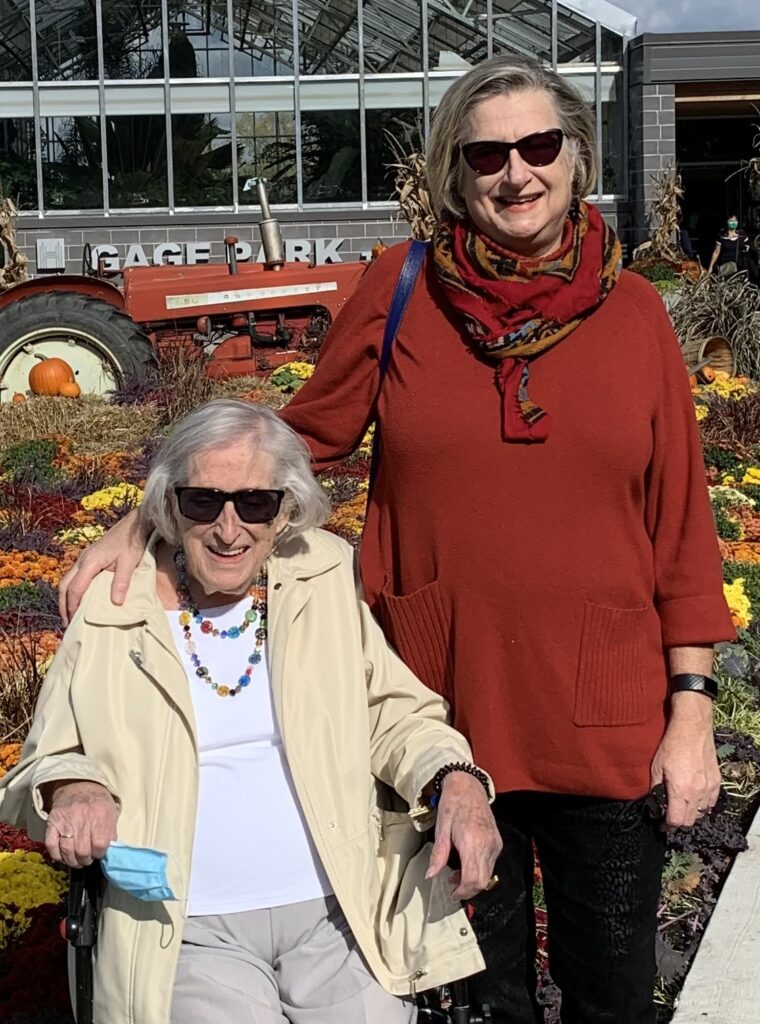Pride: Aging ally journeys from fear to love

My mother-in-law’s faith meant she struggled to accept her daughter as a lesbian. But over time, she offered blessings at our wedding and decked herself out in Pride colours in her retirement home.
“You seem like a very nice lady, but I can never accept this.”
The speaker gently, almost lovingly, placed her hand on my arm and then gestured to “this,” the space, the relationship, between me and my-now-wife Renée. I decided not to correct her reference to me as a lady with my usual quip, “I’m not married to an Earl, so I’m no Lady.”
It was 2006 and I had just finished one of my favourite meals, those thin Dutch pancakes covered in butter, lemon, and sugar. (Maple syrup, of course, if you please.)
I was meeting Corry Wetselaar for the first time. She knew her daughter identified as a lesbian, but as a stalwart of the Christian Reformed faith, would have none of it.
We had begun the meal holding hands in prayer. Now we were ending with this statement and gesture resembling nothing of the Jesus I know. I bit my tongue so hard, it may have left a stigmata-type imprint, but I carried on while Renée did the dishes as fast as she could so we could make a getaway.
Corry knew I was a Catholic, which would, against all odds, become my saving grace in her eyes. She saw the potential of my faith influencing her daughter to return to hers or some semblance of such.
I have often tried to convince others about inclusion, using strong talking points, quoting great thinkers and leaders from all realms of influence, and data about why it’s so important to support 2SLGBTQI+ people. I knew none of that would work with Corry.
Eventually, Renée asked me to marry her, leaving her mom and brothers to say yes or no to our wedding theme question, #doyoubelieveinlove. Her mom and some brothers said “yes.” Corry offered the meal blessing at our festivities and smiled and laughed as she enjoyed Munro, our friend and drag queen who entertained us after lunch.

Along the way, there were signs that Corry’s thinking was changing as she was entering her ninth decade. She would save issues of The Banner, the Christian Reformed Church magazine when articles about LGBTQ inclusion were included. She started introducing me as Renee’s partner and seemed proud to do so.
Corry left her own apartment and moved to a retirement home with more assistance during the pandemic. After surviving COVID-19 twice, she settled into life at the Village of Wentworth Heights. Renée was shocked when she showed up in June 2020 and found her mom with rainbow stickers on her walker and her sweater. She had posed with a fellow resident for a photo, and they were both decked out in Pride colours.
The Village had put on a “Rainbow Day” for resident awareness and inclusion. Yes, the times, they are a-changin’!

When I had to move my mom into a retirement home last year, the consultant was showing us around and chatting us up. When I mentioned my partner, she proudly proclaimed, and rightfully so, their residence was the only one with a table at London Pride that year. That was a selling point for me. Sadly, my mom died eight weeks later so I didn’t get to experience that with her this year.
One day, Renée and I may need to decide where we will live when we can no longer manage on our own. What options will old 2SLGBTQI+ people have to find positive and safe living spaces? That doesn’t just mean the staff. Marking Pride with “Rainbow Days,” or whatever makes it possible to open up this conversation in homes with older adults, is essential to modelling inclusion.
This year at The Village, along with all kinds of Pride flags, they had posters up throughout the month of June with photos and bios of famous people from previous generations that residents might remember. I was happy to see Lily Tomlin up there!
Corry wasn’t there to see it. She died six months ago now, only eight days after my mom. At Thanksgiving, we shared a nice brunch at our place, including my version of Dutch pancakes. Then Renée had set about doing dishes and Corry reached over and put her hand on my arm just like she had in 2006. This time she said something different.
“I’d like you to lead my funeral.”
And like the lesbian lady I am, I said, “Yes.”













